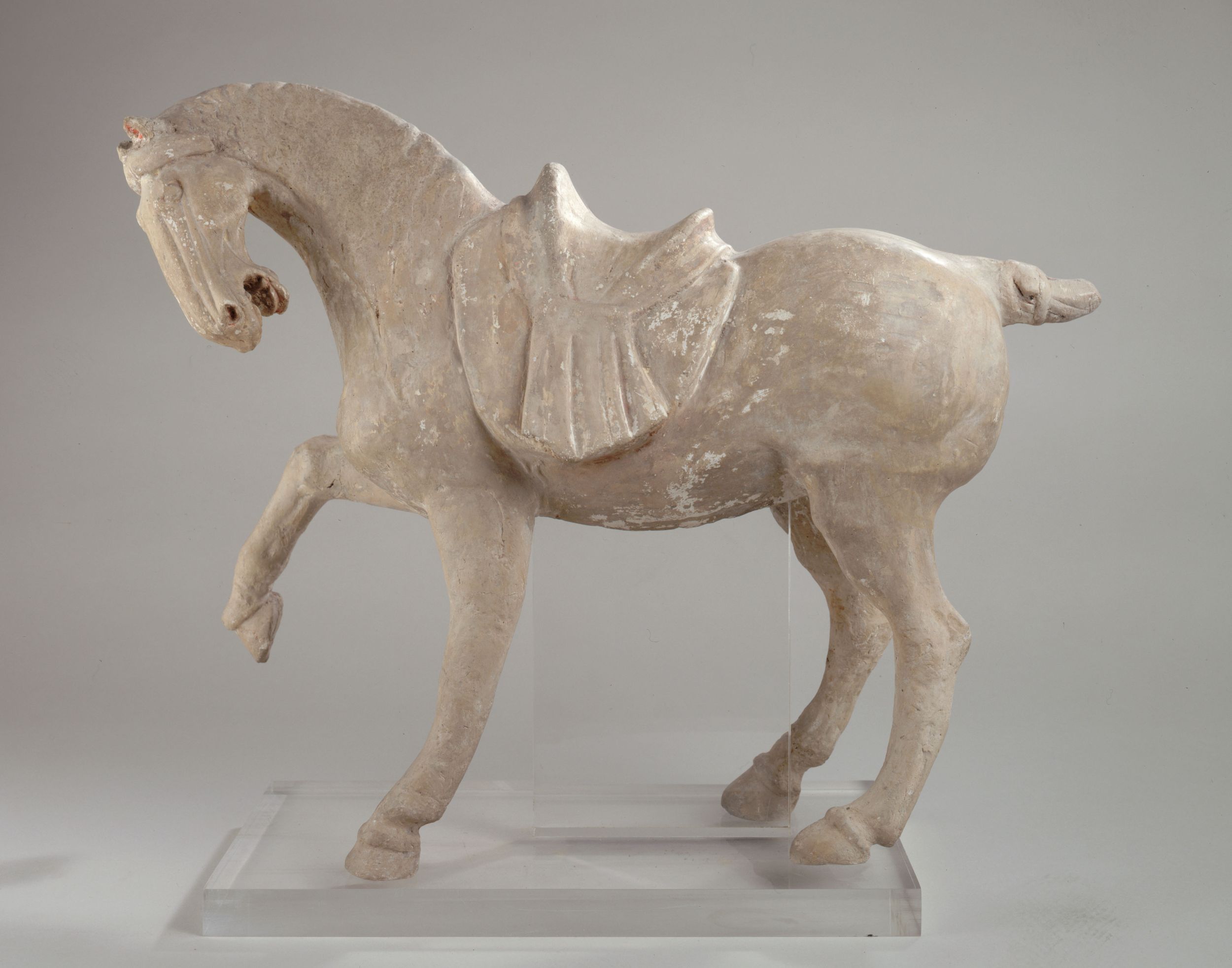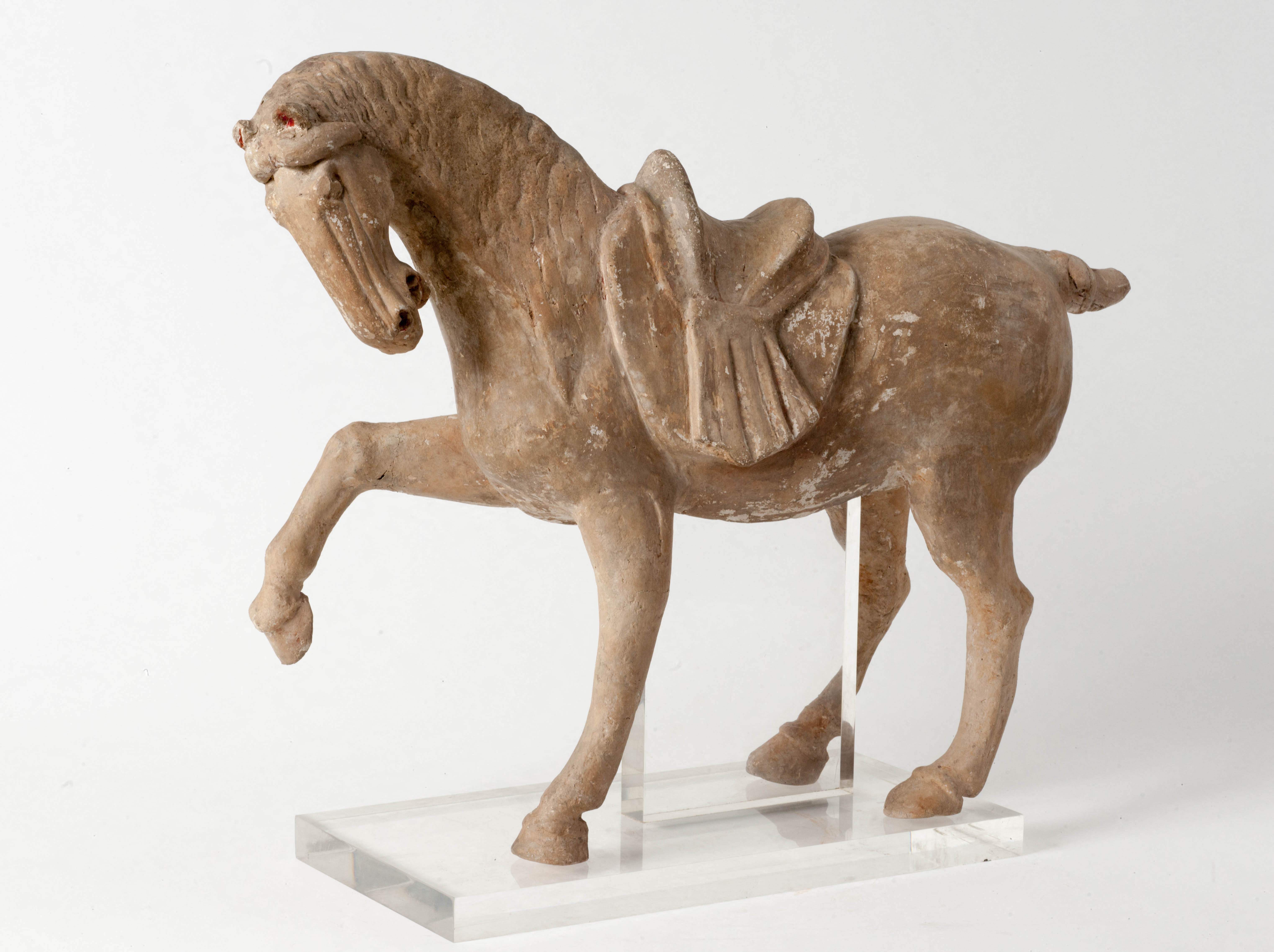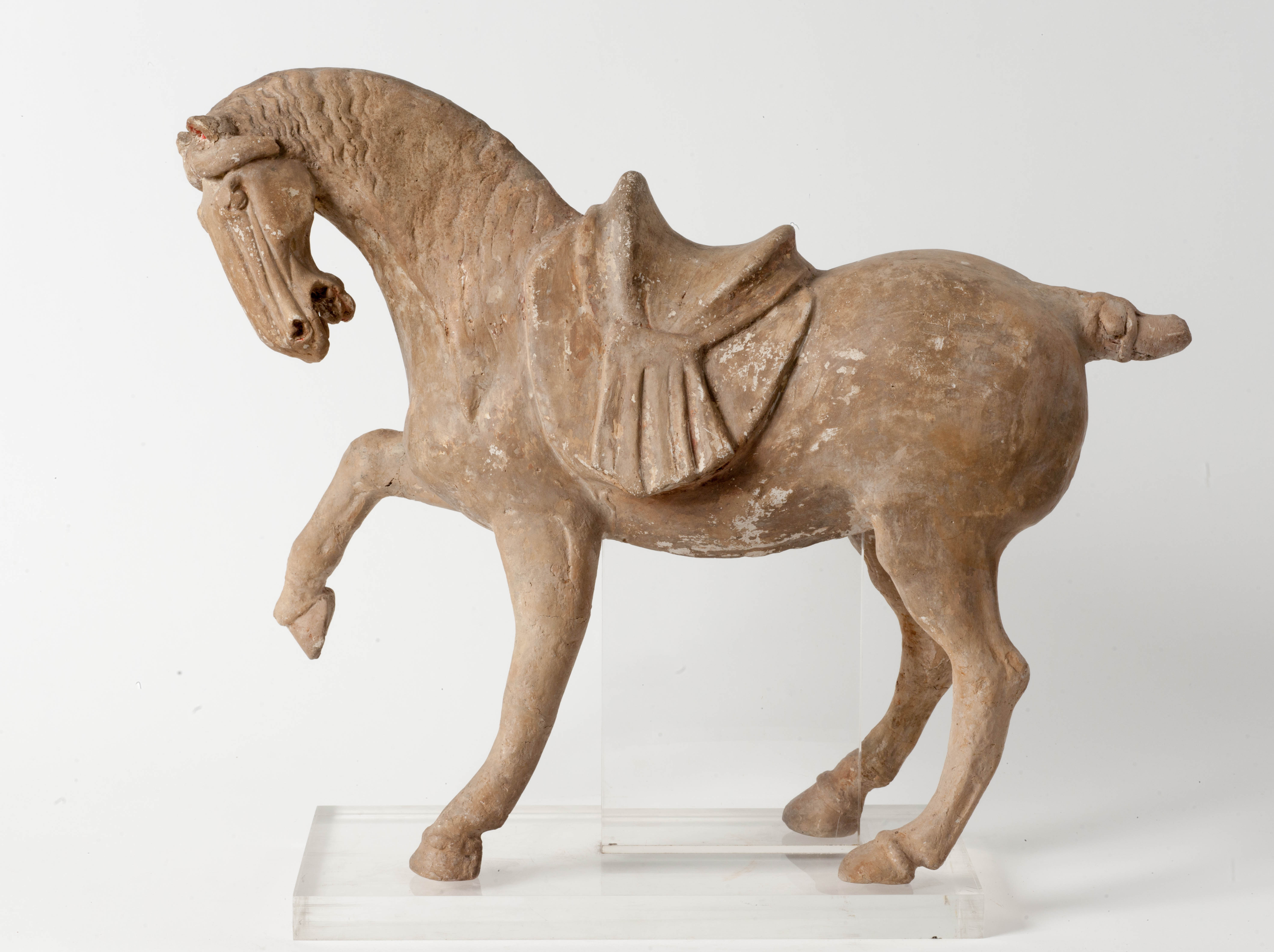
Cheval
Terre cuite, Moulage = moulé, Couleurs - Pigments
Statuette, Mingqi
H. 47 x l. 21.3 x L. 57.9 cm
M.C. 6043
Achat en vente publique
The rich equestrian iconography in Chinese tombs reflects the importance of stud farms and the equestrian arts in aristocratic circles. The stone high reliefs of the six steeds of Emperor Taizong that adorned his tomb (650) are superb examples, today divided between the Xi'an Museum and the University of Pennsylvania Museum. Ceramicists also paid careful attention to detail in the pose, breed and expressions of horses, be they the wild horses of the Han period, the harnessed horses of the Wei era or the horses performing dressage of the Tang period. Under the Tang dynasty, horses imported from the Ferghana region succeeded the small and short-legged but powerful Mongolian horses favoured during the Three Kingdoms and Six Dynasties periods. An increasing number of mingqi (funerary figurines) furnished tombs in the 8th century. For example, a medium-sized tomb such as that of the prince Huizhang (724) in Shaanxi contained no fewer than a thousand of them, half of which were equestrian figures. Horses performing dressage, as is the case in the two Cernuschi Museum ceramics, wild or harnessed horses, galloping horses ridden by warriors, falconers, female dancers, musicians or polo players: all were depicted in the form of ceramics. Besides painted terracotta, numerous horse mingqi had a “three-colour” (sancai) lead glaze with metal oxides to render the animals’ chestnut or piebald coats.

